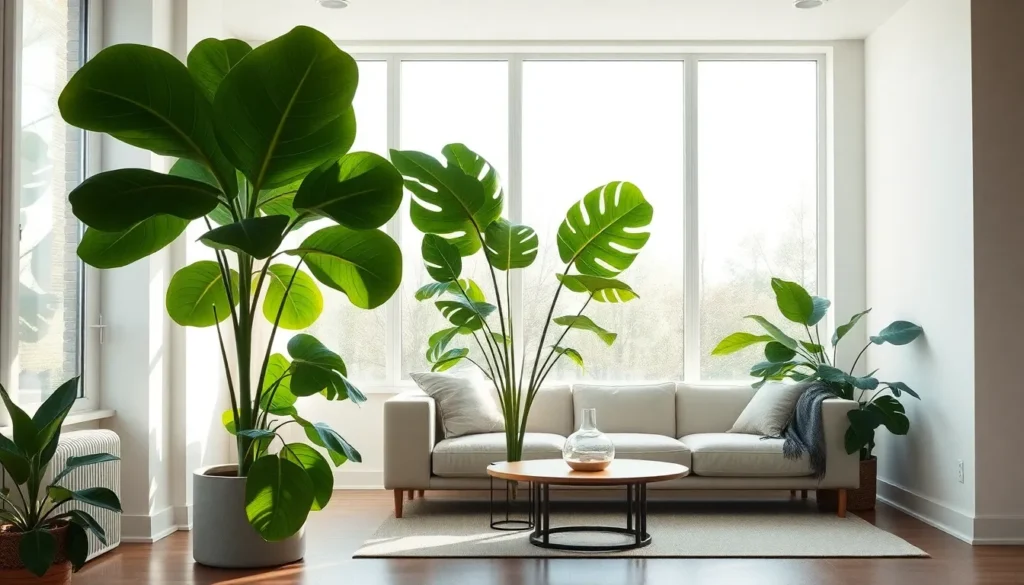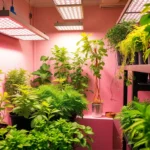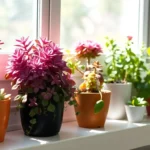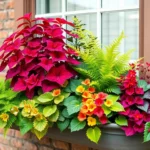Dark green plants have become the ultimate design secret that transforms any space into a sophisticated sanctuary. We’ve all felt that instant calm when walking into a room filled with lush emerald foliage – there’s something undeniably powerful about these deep-hued botanical beauties that makes them interior design gold.
The dark green plant aesthetic isn’t just another passing trend; it’s a timeless approach that adds depth, drama, and natural elegance to your home. From the glossy leaves of a fiddle leaf fig to the rich emerald tones of a monstera deliciosa, these plants create striking focal points that complement any décor style.
We’re seeing more homeowners and designers embrace this moody botanical movement because it delivers both visual impact and wellness benefits. These stunning plants don’t just look incredible – they purify your air while creating that coveted biophilic connection that makes spaces feel more alive and inviting.
Understanding the Dark Green Plants Aesthetic Appeal
Deep emerald foliage creates an unmistakable visual depth that transforms ordinary spaces into sophisticated environments. We’ve discovered that understanding the science behind this aesthetic appeal helps explain why dark green plants have become essential elements in contemporary interior design.
Why Deep Green Foliage Creates Visual Impact
Contrast creates drama in any space through the rich, saturated tones of dark green plants. These deep hues naturally anchor a room’s visual weight while providing striking contrast against lighter walls, furniture, and décor elements. Plants like the rubber tree (Ficus elastica) and ZZ plant (Zamioculcas zamiifolia) exemplify this principle with their glossy, almost black-green leaves that command attention.
Depth perception shifts when we introduce dark green foliage into our living spaces. The human eye interprets darker colors as receding, which creates an illusion of expanded space while simultaneously adding layers of visual interest. This optical effect makes rooms feel both more spacious and more intimate at the same time.
Texture amplification occurs through the interplay of dark green leaves with natural and artificial lighting. Glossy varieties like the fiddle leaf fig reflect light beautifully, while matte-finished plants such as the cast iron plant (Aspidistra elatior) absorb light to create dramatic shadows and highlights.
Architectural enhancement happens when dark green plants frame doorways, corners, and windows. These living sculptures define spaces without creating physical barriers, allowing natural flow while establishing distinct zones within open floor plans.
The Psychology Behind Dark Green Color Preferences
Biophilic connections strengthen our mental wellbeing through exposure to deep forest greens that mimic natural woodland environments. Research from environmental psychology shows that darker green tones trigger the same calming responses as walking through dense forests or established gardens.
Stress reduction occurs when we surround ourselves with the grounding presence of dark green foliage. Studies indicate that deeper green hues lower cortisol levels more effectively than lighter plant colors, creating a sanctuary-like atmosphere that promotes relaxation and mental clarity.
Focus enhancement develops in spaces featuring dark green plants due to their ability to reduce visual noise and create calm focal points. The steady, unchanging nature of these plants provides visual stability that helps our minds concentrate on tasks while feeling connected to nature.
Emotional stability increases through the psychological association of dark green with security, growth, and permanence. Unlike flowering plants that cycle through blooms, dark green foliage plants offer consistent visual comfort that supports emotional equilibrium throughout changing seasons.
Status perception elevates when we incorporate sophisticated dark green plants into our décor choices. These plants communicate refinement and intentional design decisions, creating an impression of curated elegance that reflects our appreciation for timeless natural beauty.
Selecting the Perfect Dark Green Plants for Your Space
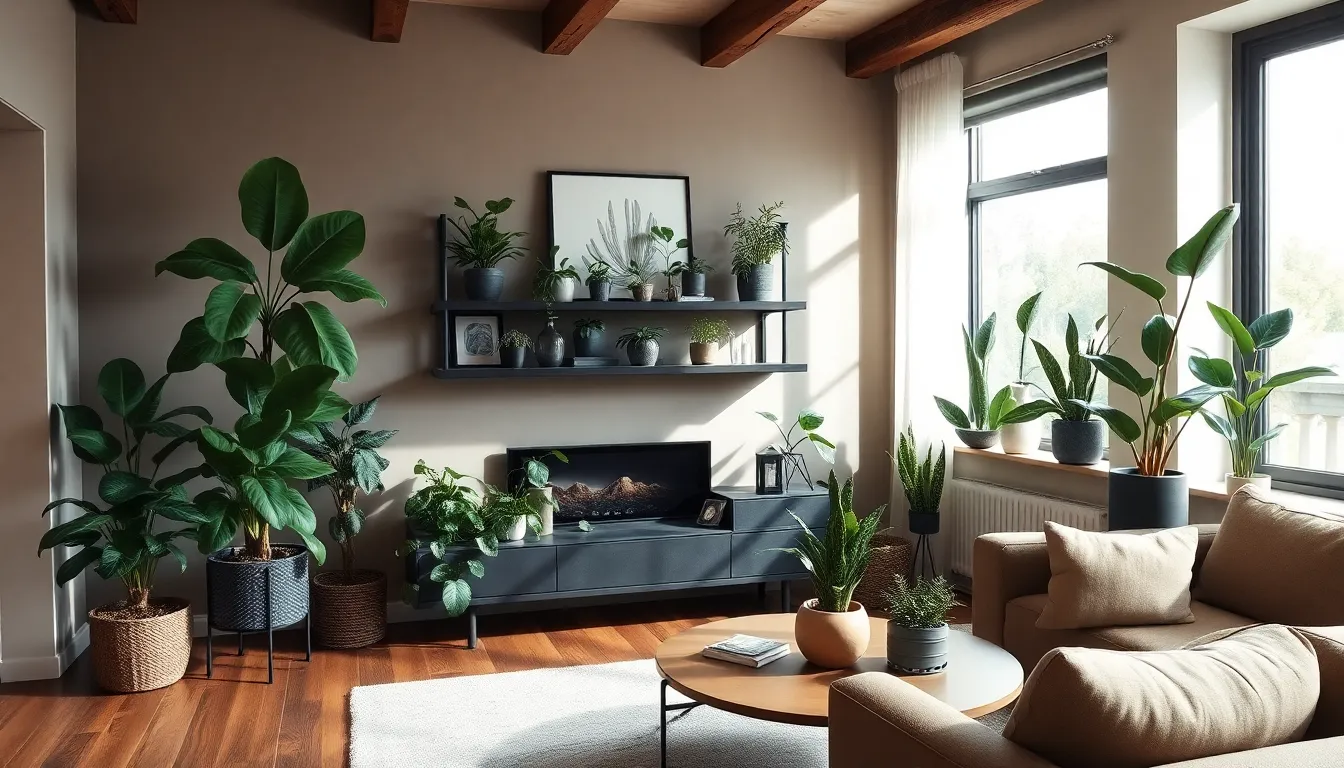
We’ve established the groundbreaking power of dark green plants in creating sophisticated interiors. Now let’s explore how to choose the right specimens that’ll thrive in your exact environment and design vision.
Low-Light Champions for Indoor Environments
Snake Plants (Dracaena trifasciata) top our list of low-light performers with their striking spear-shaped leaves and exceptional tolerance for neglect. These resilient beauties require minimal watering and can survive in corners where other plants would struggle. Monstera deliciosa adapts beautifully to medium or bright indirect light, bringing tropical vibes with its large fenestrated leaves that create stunning shadow patterns on walls. ZZ plants excel in almost any lighting condition while maintaining their glossy dark green appearance year-round. Rubber trees develop deeper leaf coloration in lower light settings, making them perfect for offices or north-facing rooms where natural light is limited.
We recommend placing these champions in areas where you want greenery but can’t guarantee consistent bright light. Their adaptability means you won’t need to rearrange your furniture around lighting requirements.
Statement Plants with Dramatic Dark Foliage
Fiddle Leaf Figs (Ficus lyrata) command attention with their large, glossy leaves that can reach impressive sizes in the right conditions. These sculptural beauties work best in spacious living rooms where their dramatic form can be fully appreciated. Snake Plants create striking vertical elements that earn them the nickname “mother-in-law’s tongue,” making them ideal for adding height and structure to any room design. Monstera deliciosa serves as a natural conversation starter with its distinctive split leaves that develop more dramatic fenestrations as the plant matures.
We suggest using these statement makers as focal points rather than grouping them with other large plants. Their bold presence works best when they have room to breathe and be admired from multiple angles.
Small Dark Green Plants for Limited Spaces
Compact Snake Plant varieties deliver the same dramatic appeal as their larger cousins while fitting perfectly on desks, shelves, or windowsills. These smaller cultivars maintain the characteristic dark green coloration and upright growth pattern without overwhelming tight spaces. Peperomia varieties offer diverse leaf shapes and textures in deep green hues, perfect for creating layered displays on plant stands or floating shelves. Small Monstera cultivars bring the tropical aesthetic to apartments and offices where floor space is at a premium.
We find these petite powerhouses work wonderfully in groups of three or five, creating visual interest through varied heights and textures. Their compact size allows for creative placement options like bathroom counters, kitchen windowsills, or bedroom nightstands where larger plants simply won’t fit.
Creating Stunning Plant Arrangements with Dark Green Varieties
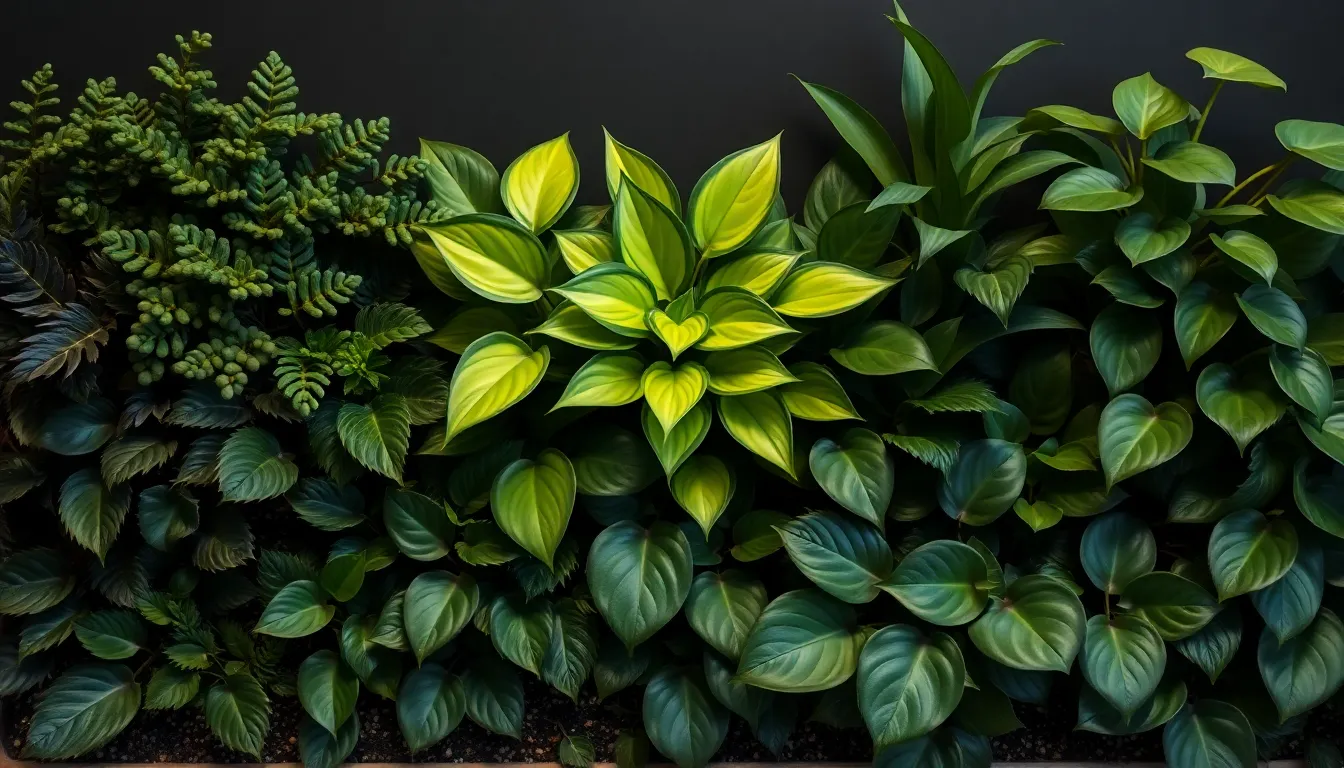
Mastering the art of plant arrangement with dark green varieties transforms any space into a sophisticated botanical showcase. We’ll explore proven techniques that elevate your dark green plant aesthetic from ordinary to extraordinary.
Layering Different Shades of Green for Depth
Layering different green shades creates remarkable visual depth that makes arrangements appear fuller and more ever-changing. We recommend starting with dark forest greens as your base layer, then adding medium-toned varieties like jade plants or pothos, before finishing with lighter chartreuse or pale green accents.
Building these layers strategically allows designers to play with light and shade throughout the arrangement. Position your darkest plants toward the back or center, creating a rich foundation that anchors the entire display. Medium-toned plants work beautifully in the middle layer, bridging the gap between deep and light tones.
Finishing touches come from incorporating pale green varieties like certain hoya species or young philodendron leaves. This layering technique creates a natural gradient that mimics how plants grow in their native environments, where canopy layers filter light differently.
Combining Textures and Leaf Shapes
Combining varied leaf shapes and textures prevents monotony while enriching the overall aesthetic appeal. We suggest pairing broad, glossy leaves like those found on rubber trees with delicate, feathery fronds from ferns or asparagus plants.
Mixing smooth textures with rough or jagged surfaces adds complexity that keeps viewers engaged. Consider placing glossy boxwood leaves alongside the textured surfaces of begonia rex or the ribbed patterns of calathea varieties.
Incorporating different leaf sizes creates additional visual interest within your dark green plant arrangements. Large, dramatic leaves serve as statement pieces, while smaller, intricate foliage fills gaps and adds detail work that rewards closer inspection.
Using Dark Plants as Focal Points
Using dark green plants as focal points anchors your entire arrangement while drawing the eye naturally. We position these dramatic specimens centrally or at strategic points where they can frame and highlight other elements in the display.
Dark plants create striking focal points that work especially well when accented with lighter or brightly colored blooms. Their intensity serves as a sophisticated backdrop that makes other colors pop while maintaining an elegant foundation.
Strategic placement helps boost the overall aesthetic impact of your arrangement. Consider positioning your darkest specimens where they can take advantage of natural light sources, creating beautiful silhouettes that enhance their dramatic presence throughout the space.
Styling Dark Green Plants in Modern Interior Design
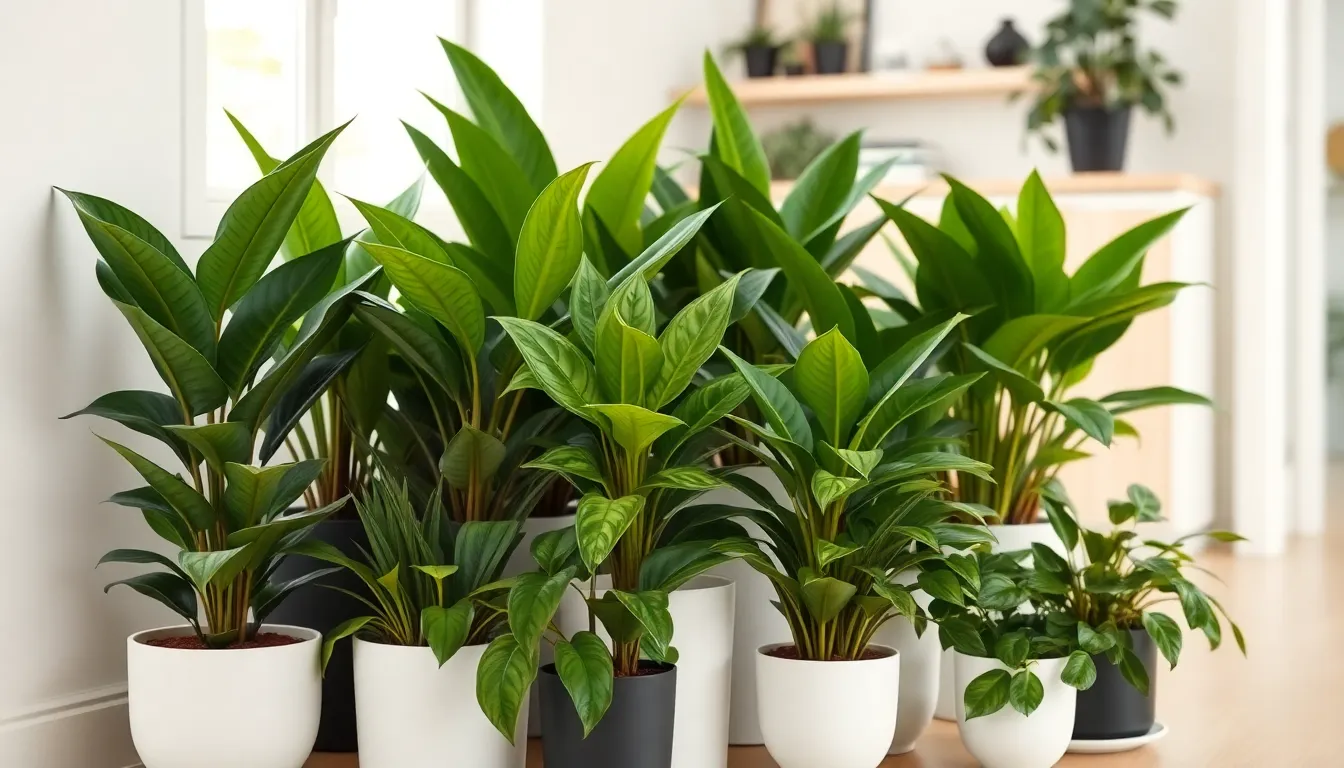
Modern interior design embraces the bold sophistication that dark green plants bring to contemporary spaces. We’ll explore how these rich, deep foliage specimens transform minimalist, Scandinavian, and industrial settings into stunning sanctuaries.
Minimalist Approaches to Dark Plant Displays
Clean lines define minimalist dark plant displays through strategic selection and placement. ZZ Plants offer glossy, uniform foliage that creates texture without visual clutter. Dracaena Janet Craig features simple leaf shapes that complement streamlined aesthetics perfectly.
Single specimen displays maximize impact in minimalist spaces. We position one striking plant in well lit corners to create focal points without overwhelming the room’s simplicity. Tall, slender varieties like snake plants accentuate vertical space while maintaining the uncluttered feel.
Container choices remain neutral and monochrome to support minimalist principles. Painted pots in white, black, or gray tones maintain the understated aesthetic we’re seeking. Custom spray painted planters allow us to perfectly match existing color schemes while keeping the focus on the plant’s natural beauty.
Incorporating Dark Green Plants in Scandinavian Decor
Natural contrast emerges when dark green foliage meets Scandinavian brightness. Rubber Plants with their burgundy tinged leaves create warmth against the typical white, gray, and light wood palette. Dracaena varieties break the monotony of neutral tones while keeping the overall feel earthy and natural.
Strategic placement near natural light sources emphasizes the plants’ vibrancy. We position these specimens where they’ll receive ample sunlight to showcase their rich coloring. Windows become natural frames for the lush greenery, creating beautiful silhouettes throughout the day.
Functional furniture pairing enhances the clean lined aesthetic. Dark green plants complement Scandinavian design’s emphasis on simplicity and functionality. We select containers that echo the natural materials already present, using light woods or ceramic planters that blend seamlessly with the existing decor.
Industrial Style Integration with Deep Green Foliage
Glossy dark leaves create striking contrasts against raw industrial materials. Deep green plants soften the hard edges of exposed brick, concrete, and metal finishes commonly found in industrial spaces. Fiddle Leaf Figs with their large, shiny leaves serve as bold counterpoints to urban textures.
Rustic and repurposed containers tie organic elements into industrial themes. We use weathered metal planters, reclaimed wood boxes, or vintage industrial containers to house our dark green specimens. These choices reinforce the edgy yet inviting atmosphere that defines industrial design.
Window placement enhances the nature meets urban aesthetic. Positioning plants near large industrial windows creates dramatic silhouettes while maximizing natural light exposure. Worn furniture nearby amplifies the contrast between organic life and industrial elements, establishing the perfect balance between raw and refined.
Caring for Your Dark Green Plant Collection

Maintaining the lush beauty of your dark green plant collection requires understanding their exact needs and addressing common challenges. We’ll guide you through the essential care practices that keep these stunning specimens thriving in your home.
Understanding Light Requirements for Deep Green Plants
Dark green plants handle bright, indirect light conditions exceptionally well while tolerating lower light situations better than their lighter-leaved counterparts. Plants like Chinese Evergreens with darker foliage thrive in dimmer spots, whereas variegated varieties need brighter conditions to maintain their striking color patterns.
Direct sunlight should be avoided completely as it causes leaf burn and damages the rich green coloration we’re trying to preserve. Natural light from north-facing windows or filtered light through sheer curtains provides the ideal illumination for most dark green varieties.
Supplemental grow lights become necessary when natural light isn’t sufficient, particularly during winter months or in windowless spaces. We recommend positioning LED grow lights 12-18 inches above your plants for optimal coverage without heat damage.
Watering and Humidity Needs
Water your dark green plants when the topsoil feels dry to the touch, ensuring the soil remains moist but never waterlogged. Overwatering ranks as the most common mistake among plant owners, so allowing soil to dry slightly between waterings prevents root rot and maintains healthy root systems.
Winter months require reduced watering frequency as many plants enter semi-dormant phases and their water uptake decreases significantly. We suggest checking soil moisture weekly rather than following a strict schedule, as environmental factors affect water needs constantly.
Moderate humidity levels benefit most dark green foliage plants, though exact requirements vary by species. Grouping plants together creates natural humidity pockets, while pebble trays filled with water provide consistent moisture without creating soggy conditions.
Common Issues and Answers
Overwatering Problems: Soggy soil leads to root rot and yellowing leaves. Allow soil to dry completely and adjust your watering schedule to prevent future issues.
Light Stress Damage: Direct sunlight causes brown spots and leaf burn on dark green foliage. Move affected plants to shaded areas or provide indirect light through filtered windows.
Pest Infestations: Aphids, mealybugs, and spider mites commonly target dark green plants. Manual removal works for small infestations, while horticultural oils or insecticidal soaps control larger populations safely.
Leaf Maintenance: Prune yellow, brown, or damaged leaves using sterile pruning tools to maintain plant health and appearance. Clean leaves regularly with a damp cloth to remove dust buildup and keep foliage fresh and vibrant.
Repotting Schedule: Refresh soil every 2-3 years or when plants become rootbound to maintain vigor and prevent nutrient depletion. Choose containers with drainage holes to prevent water accumulation.
Photography Tips for Capturing Dark Green Plants Aesthetic
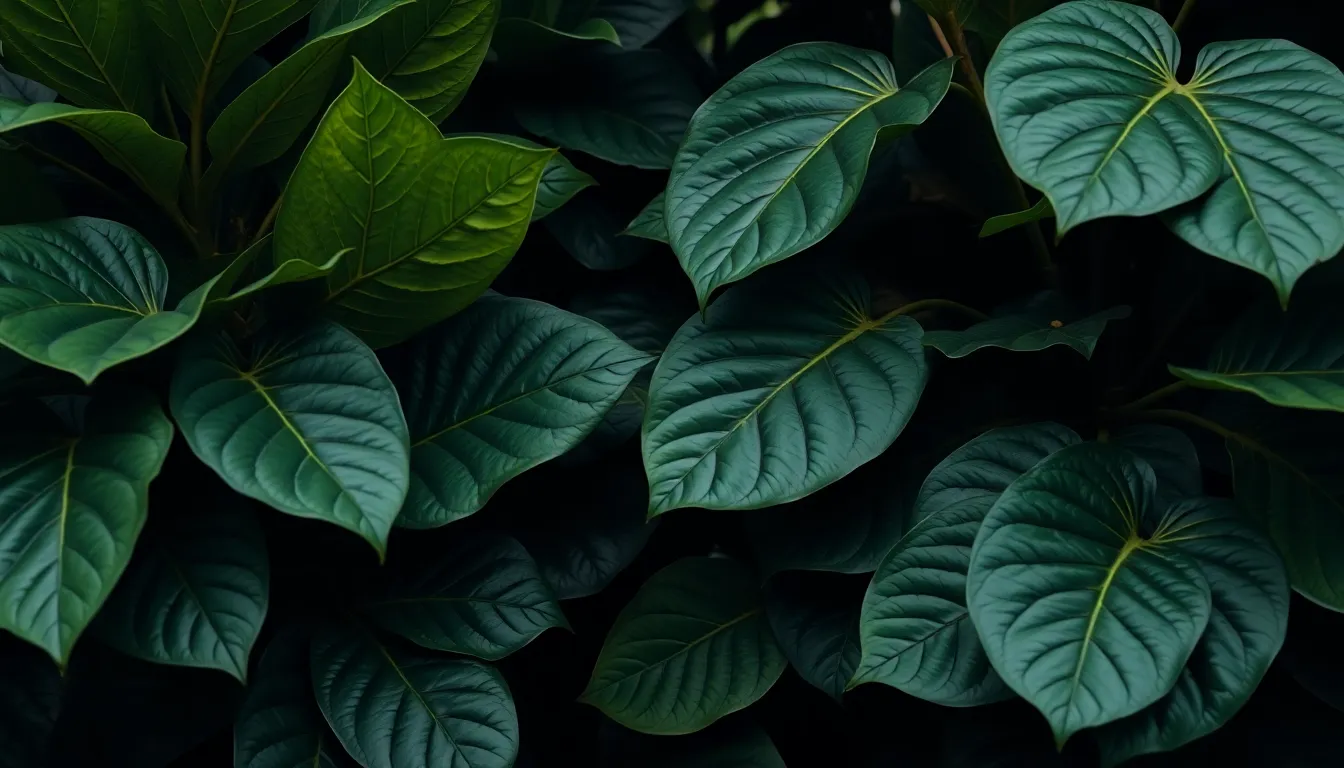
Capturing the sophisticated beauty of dark green plants requires exact techniques that showcase their rich foliage and natural elegance. We’ll explore essential methods to photograph these dramatic specimens with professional results.
Lighting Techniques for Rich Green Tones
Diffuse natural daylight creates the perfect conditions for photographing dark green plants without harsh shadows or blown highlights. We recommend shooting during bright but overcast conditions to preserve the intricate details and deep green shades that make these plants so visually striking.
Backlighting adds a natural glow to fuzzy or textured leaves like those found on rubber trees and fiddle leaf figs. Position your light source behind the plant to create this ethereal effect, though you’ll need to experiment with angles to achieve the perfect balance between illumination and drama.
Reflectors can gently illuminate shadowed areas while reducing harsh contrast, but we suggest using them subtly to maintain the natural appearance of your dark green subjects. Pair reflectors with diffusers to soften direct sunlight and create balanced lighting that enhances the plant’s natural beauty.
White balance accuracy ensures your dark green plants appear true to life in your photographs. We recommend using a photographic grey card to set correct white balance, which preserves the rich, authentic green colors that make these plants so appealing.
Composition Ideas for Plant Photography
Textures and patterns in dark green foliage create compelling focal points that draw viewers into your photographs. Focus on multi-layered leaves, intricate bark textures, or the dramatic veining found in monstera deliciosa and similar statement plants to emphasize their natural complexity.
Negative space surrounding your dark green subjects helps them command attention in your frame. We suggest using simple backgrounds or creating out-of-focus areas that allow the plant’s sophisticated silhouette to shine without visual distractions.
Shallow depth of field techniques using wide apertures blur backgrounds while keeping dark green foliage sharply in focus. This approach enhances the plant’s prominence and creates professional-looking images that highlight the aesthetic appeal we’ve discussed throughout this guide.
Eye-level and low-angle shots add depth and perspective to your plant photography, creating more immersive compositions. Shooting from these positions allows viewers to experience the commanding presence that dark green plants bring to interior spaces.
Complementary colors in backgrounds or props make dark green tones pop visually in your photographs. We recommend incorporating warm earth tones or neutral elements that contrast beautifully with the deep forest greens of your featured plants.
Editing Tips to Enhance Green Colors
Shadow and highlight adjustments reveal the intricate details hidden within dark green foliage while controlling bright spots for balanced exposure. We recommend increasing shadows slightly to bring out leaf textures and adjusting highlights to prevent overexposure in lighter areas.
Saturation control requires a gentle touch when improving green colors in your plant photography. Boost saturation by approximately 5% to enrich the natural tones without creating an artificial appearance that detracts from the plant’s authentic beauty.
Warmth adjustments can deepen green tones and provide a natural feel to your photographs. Adding subtle warmth enhances the cozy, sophisticated atmosphere that dark green plants create in interior spaces.
Sharpening key areas like leaf veins and surface textures accentuates the tactile quality that makes dark green plants so visually compelling. Focus your sharpening on exact details rather than applying it globally to maintain a natural appearance.
Natural appearance preservation should guide all your editing decisions when working with dark green plant photography. We recommend limiting your adjustments to brightness, contrast, warmth, saturation, highlights, shadows, and selective sharpening to keep your plants looking authentic and true to their sophisticated aesthetic.
Budget-Friendly Ways to Achieve Dark Green Plants Aesthetic
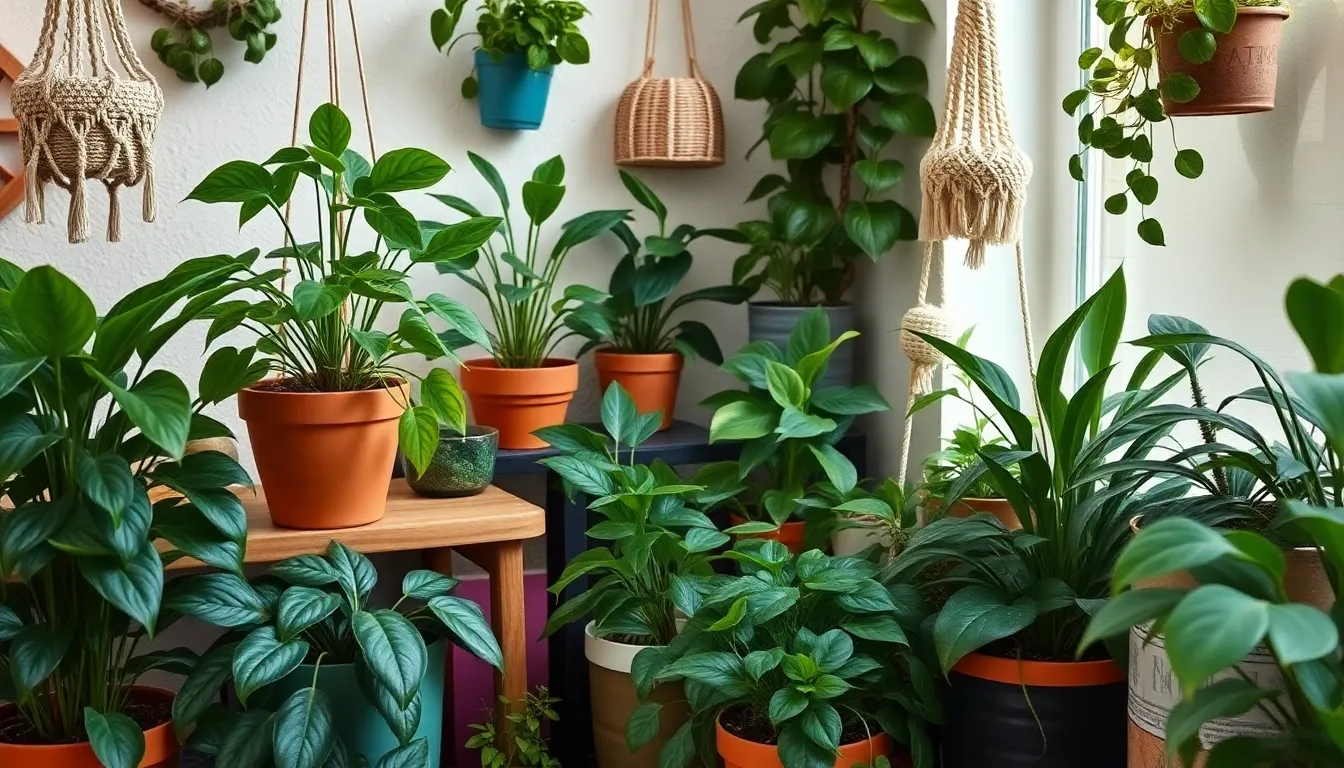
Creating a stunning dark green plant aesthetic doesn’t require a massive budget or expensive purchases. We can build our dream botanical sanctuary using smart strategies that maximize impact while minimizing costs.
Propagating Your Own Dark Green Plants
Propagation transforms single plants into entire collections without spending additional money. Water propagation works exceptionally well for pothos, snake plants, and philodendrons—simply cut healthy stems and place them in glass containers filled with water. We’ll see roots developing within 2-3 weeks, creating new plants ready for potting.
Soil propagation offers another reliable method for expanding our dark green plant family. Snake plants can be divided at the root system, creating multiple plants from one original specimen. Rubber trees and ZZ plants also respond well to leaf or stem cuttings placed directly in potting mix.
Taking cuttings from friends’ plants creates opportunities for plant swaps and community building. Many dark green varieties like ferns and begonias readily produce offshoots that can be separated and potted independently. This approach allows us to diversify our collection while sharing the joy of gardening with others.
Finding Affordable Plant Sources
Local plant swaps provide access to mature dark green plants at fraction of retail prices. Community gardening groups often organize monthly exchanges where enthusiasts trade cuttings, small plants, and gardening supplies. Facebook marketplace and neighborhood apps frequently feature plant lovers selling healthy specimens for $5-15.
Nursery sales and seasonal clearances offer important savings on quality dark green plants. End of season sales typically feature 30-50% discounts on plants like monstera deliciosa and fiddle leaf figs. Visiting multiple nurseries during their off peak times increases our chances of finding marked down specimens.
Online plant communities connect us with sellers offering starter plants and rare varieties. Etsy shops specializing in plant cuttings provide access to unique dark green cultivars at competitive prices. Reddit plant communities host regular sales where members offer cuttings and small plants for shipping costs only.
DIY Planters and Display Ideas
Painted terracotta pots in deep forest green shades complement our plants while staying budget conscious. Standard terracotta planters cost $2-8 each and can be transformed using acrylic paint in hunter green or sage tones. Adding drainage holes to decorative containers like ceramic bowls or vintage finds creates custom planters for under $10.
Macramé hanging displays maximize vertical space while showcasing trailing dark green varieties. Cotton rope costs less than $15 and creates multiple hangers that highlight plants like pothos and philodendrons. Wall mounted shelving systems built from reclaimed wood provide multi level displays for our expanding collection.
Repurposed containers painted in coordinating dark green hues tie our aesthetic together seamlessly. Tin cans, glass jars, and plastic containers become stylish planters with primer and spray paint costing under $20 total. Grouping these DIY planters in odd numbers creates visual interest while maintaining our cohesive dark green theme throughout the space.
Seasonal Maintenance for Dark Green Plant Aesthetics
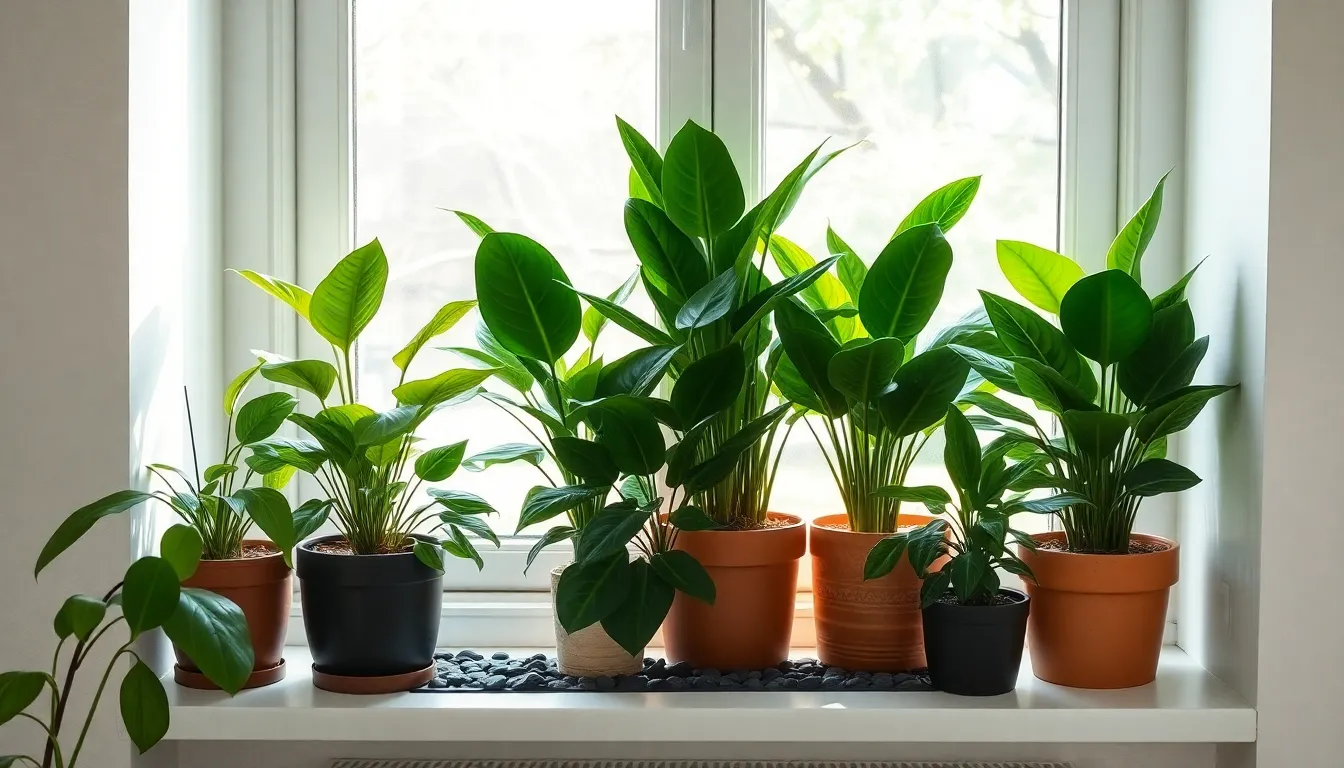
Maintaining the lush beauty of dark green plants requires understanding their seasonal needs and adjusting our care routines accordingly. Proper seasonal maintenance ensures these stunning specimens retain their rich foliage and aesthetic appeal throughout the year.
Winter Care for Indoor Dark Plants
Winter months demand important adjustments to our dark green plant care routines as growth naturally slows and environmental conditions change. Watering frequency should be reduced to once a month or only when the soil feels completely dry to the touch, preventing the root rot that commonly affects plants during this dormant period.
Positioning becomes crucial during winter as we must keep these plants in bright, indirect light while protecting them from cold drafts that can damage their sensitive foliage. Temperature fluctuations near windows, heating vents, and exterior doors can stress dark green plants like rubber plants and ZZ plants, so we’ll want to move them to more stable locations.
Drainage monitoring intensifies during winter since excess moisture buildup poses the greatest threat to plant health when evaporation rates drop significantly. We should ensure all pots have adequate drainage holes and consider adding pebble trays to maintain proper humidity without waterlogging the soil.
Spring Refresh and Repotting
Spring signals the perfect time for refreshing our dark green plant collection as they emerge from winter dormancy and resume active growth. Repotting into slightly larger containers with fresh, well draining soil supports healthy root expansion and provides essential nutrients for the growing season ahead.
Watering frequency increases during spring as plants like spider plants and aloe vera begin their active growth phase, typically requiring water twice a month or more depending on the exact species and environmental conditions. We’ll monitor soil moisture more closely and adjust our watering schedule as growth accelerates.
Pruning opportunities arise in spring when we can safely remove any damaged winter growth and shape our plants to promote fuller, more attractive foliage that enhances their aesthetic appeal throughout the year.
Year-Round Aesthetic Maintenance
Lighting consistency forms the foundation of maintaining vibrant dark green plant aesthetics, requiring bright, indirect light year round to preserve rich coloration without causing leaf burn that dulls their appearance.
Strategic watering schedules vary by season but consistently follow the principle of thorough, infrequent watering that allows soil to dry between cycles, preventing the overwatering issues that plague many indoor gardeners.
Humidity management enhances leaf quality through regular misting or pebble tray systems, especially important in dry environments where low humidity can cause leaf edges to brown and detract from the plants’ visual impact.
Leaf cleaning maintains photosynthetic efficiency and preserves the glossy appearance that makes plants like rubber trees so aesthetically appealing, requiring weekly dusting with a damp cloth to remove accumulated particles.
Fertilizing during active growth periods from spring through summer with balanced liquid fertilizer supports the lush foliage development that keeps these plants looking their absolute best in our carefully curated spaces.
Conclusion
We’ve explored how dark green plants can completely transform your living spaces into sophisticated botanical sanctuaries. These versatile beauties offer endless possibilities for creating stunning arrangements that work across every design style and budget.
The journey from selection to styling doesn’t have to be overwhelming. Whether you’re propagating your first cutting or arranging a dramatic focal display we’ve shown you practical ways to achieve that coveted dark green aesthetic without very costly.
Most importantly we’ve equipped you with the knowledge to keep your green companions thriving year-round. With proper care techniques seasonal adjustments and creative styling approaches you’re ready to cultivate your own lush indoor oasis that reflects your personal style while bringing nature’s calming presence into your daily life.
Frequently Asked Questions
What are the best dark green plants for beginners?
Snake plants, ZZ plants, and rubber trees are ideal for beginners. These low-maintenance varieties thrive in various lighting conditions and tolerate occasional neglect. They’re perfect for those new to plant care while still providing the sophisticated dark green aesthetic that transforms any space.
How often should I water my dark green plants?
Allow the topsoil to dry between waterings, typically every 1-2 weeks depending on the plant and season. Reduce watering frequency during winter months when plant growth slows. Overwatering is more harmful than underwatering for most dark green varieties.
Can dark green plants survive in low-light conditions?
Yes, many dark green plants are excellent low-light champions. Snake plants, ZZ plants, and rubber trees specifically thrive in less-than-ideal lighting conditions, making them perfect for offices, bathrooms, or rooms with limited natural light exposure.
What are the psychological benefits of dark green plants?
Dark green plants reduce stress, enhance focus, and promote emotional stability. Research shows that deeper green hues can lower cortisol levels and create a calming atmosphere. They also foster a biophilic connection that enhances mental well-being and productivity.
How do I style dark green plants in minimalist decor?
Emphasize clean lines with single specimen displays in neutral containers. Choose statement plants like fiddle leaf figs or monstera deliciosa as focal points. Maintain simplicity by avoiding overcrowding and letting each plant’s natural beauty shine against clean backgrounds.
What’s the best lighting for dark green plants?
Bright, indirect light is ideal for most dark green plants. They can tolerate lower light conditions but avoid direct sunlight, which can cause leaf burn. Position plants near windows with filtered light or use sheer curtains to diffuse harsh rays.
How can I create depth with dark green plant arrangements?
Layer different shades of green, starting with dark forest greens as your base and incorporating medium and lighter tones. Combine varied leaf shapes and textures to prevent monotony. Use dark green plants as anchor points to create visual depth and sophistication.
When should I repot my dark green plants?
Repot every 1-2 years or when roots become pot-bound. Spring is the ideal time for repotting as plants enter their active growth phase. Choose containers slightly larger than the current pot to ensure proper drainage and nutrient availability.
How do I propagate dark green plants to save money?
Most dark green plants can be propagated through water or soil methods. Take cuttings from healthy stems, place in water until roots develop, then transplant to soil. This free method allows you to expand your collection and share plants with friends.
What are common problems with dark green plants and their solutions?
Common issues include overwatering (reduce frequency), light stress (adjust placement), pest infestations (use neem oil), and dusty leaves (clean regularly with damp cloth). Monitor your plants regularly and adjust care routines based on seasonal changes and plant responses.

